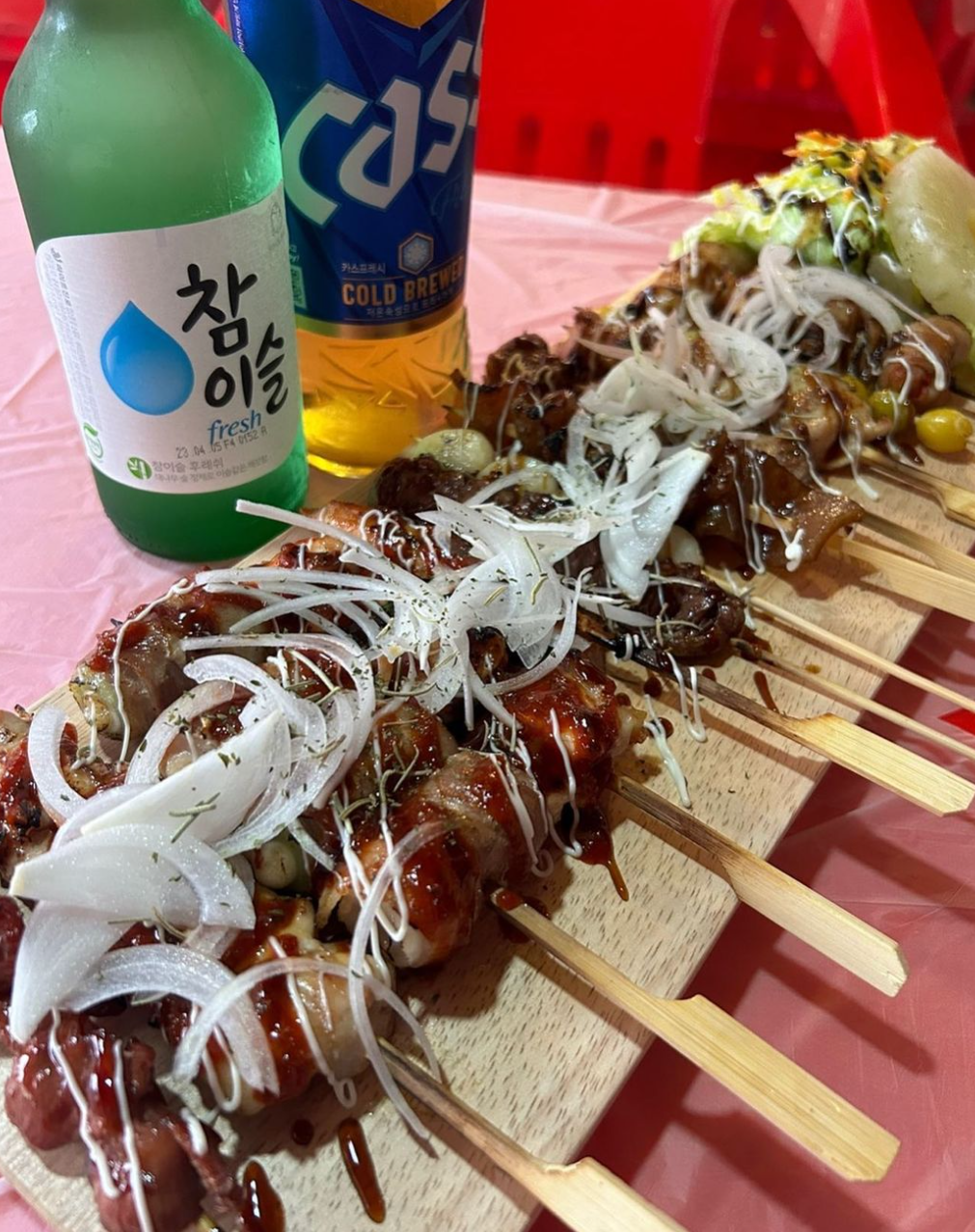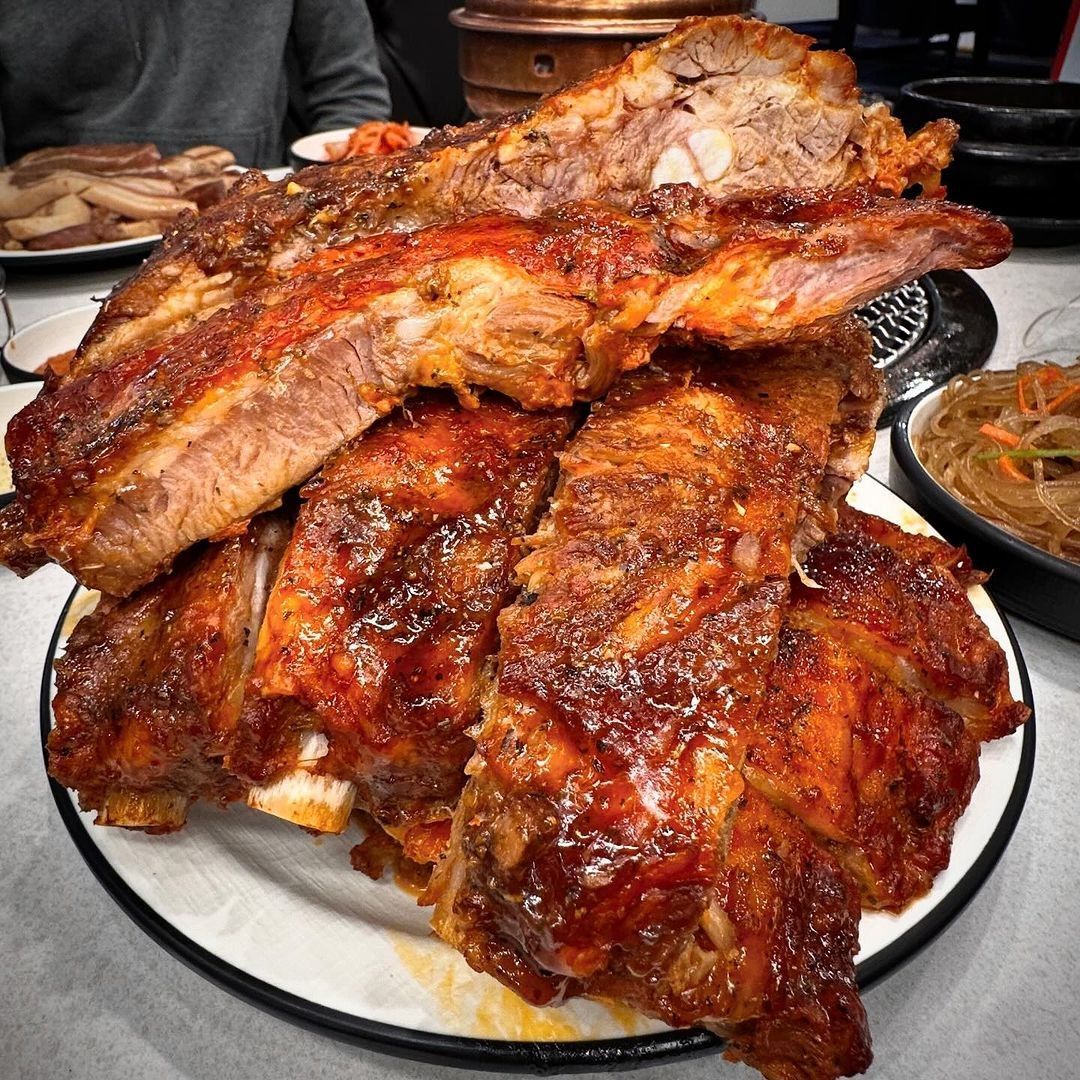Exploring the Baekje Kingdom: Discover Korea's Ancient Cultural Legacy and Historical Sites
Did you know that the ancient kingdom of Baekje once boasted a population of nearly 4 million people, surpassing its rival Silla and rivaling the mighty Goguryeo? This fascinating tidbit is just the tip of the iceberg when it comes to the hidden treasures of Baekje, one of Korea's Three Kingdoms that flourished from 18 BC to 660 AD.
While often overshadowed by its more famous counterparts, Baekje's legacy continues to captivate history enthusiasts and casual observers alike. From the serene temples nestled in the hills of Buyeo to the imposing fortress walls of Gongju, remnants of Baekje's glory days still dot the landscape of modern South Korea. These historical sites, now UNESCO World Heritage treasures, offer a tangible connection to a kingdom that once dominated the southwestern Korean peninsula.
But Baekje's influence extends far beyond ancient stones and artifacts. The kingdom's cultural impact can be felt in the very fabric of Korean society, from its contributions to Buddhism to its role in shaping the Japanese writing system. For those eager to dive deeper into Baekje's rich history, a wealth of experiences awaits. Whether you're exploring the immersive Baekje Cultural Land, a theme park that brings the ancient kingdom to life, or indulging in popular K-dramas that dramatize the political intrigues of the Baekje court, there's no shortage of ways to connect with this fascinating era.
Join us as we embark on a journey through time, uncovering the hidden treasures of Baekje and discovering how this ancient kingdom continues to captivate and inspire in modern Korea.
The Rise of Baekje: A Kingdom’s Beginnings
Legendary Founding of Baekje
According to tradition, Baekje was founded in 18 BC by King Onjo. The Samguk Sagi, Korea's oldest existing historical record, states that Onjo was the third son of King Dongmyeong, the founder of Goguryeo. Along with his older brother Biryu, Onjo led a group of people south from Goguryeo and established a new state.
Onjo initially settled in Wiryeseong (present-day Hanam) and called his country Sipje, meaning "Ten Vassals". His brother Biryu settled in Michuhol (present-day Incheon) against the advice of his vassals. When Biryu's settlement struggled due to the salty water and marshes, he went to Onjo asking for the throne of Sipje. After being refused, Biryu declared war but was defeated. Following Biryu's suicide, his people moved to Wiryeseong, where Onjo welcomed them and renamed the kingdom Baekje, meaning "Hundred Vassals".
Strategic Location and Early Expansion of Baekje
Baekje's initial territory was centered around the Han River basin in central Korea. This strategic location along the river and near the coast allowed Baekje to develop into a significant regional sea power with political and trade relations extending to China and Japan.
Under its 8th ruler, King Goi (r. 234-286), Baekje began to mature into a fully-fledged kingdom. King Goi actively expanded Baekje's territory, attacking the Chinese commandery of Nangnang in 246 and engaging with other provinces and states. To govern his enlarged realm, King Goi implemented administrative reforms, categorizing government positions into 16 ranks and promulgating laws and rules.
Cultural Development and Buddhism
Baekje's culture flourished as the kingdom grew in power and influence. The kingdom became known for its advanced metalworking industry, producing exquisite golden crowns, gold and silver ornaments, and Buddha statues. Baekje art is characterized by its gentility, softness, and elegance, as seen in its distinctive stone pagodas and elaborately patterned earthenware.
Buddhism played a crucial role in Baekje's cultural development. According to tradition, Buddhism was officially introduced to Baekje in 384 CE, when the Indian or Serindian monk Marananta arrived from Eastern Jin China. The new faith received a favorable reception, and many temples were built as Buddhism flourished. Baekje would go on to develop highly advanced Buddhist art, surpassing that of the other Korean kingdoms.
The Rise Under King Geunchogo
Baekje reached its zenith during the reign of King Geunchogo (r. 346-375), considered the 13th monarch of the kingdom. Under his rule, Baekje achieved its greatest geographic extent and political power. King Geunchogo implemented several key measures to strengthen royal authority:
- He reduced the power of the aristocracy and established a system of local government with regional heads appointed by the court.
- He set a precedent by marrying a wife from the Jin clan, which his successors would follow.
- He moved the capital to Hansan, in present-day southeast Seoul.
Geunchogo also oversaw significant territorial expansion. In 369, Baekje annexed the remaining tribes of Mahan, solidifying control over present-day Jeolla Province. The kingdom also made the Gaya confederacy states west of the Nakdong River its dependencies.
In terms of foreign relations, Geunchogo allied with Silla in 366, creating a balance of power among the Three Kingdoms. He also established diplomatic relations with Jin China in 345 and Japan in 367, enhancing Baekje's international standing.
Under Geunchogo's leadership, Baekje's military prowess was demonstrated in 371 when Crown Prince Geungusu led a 30,000-strong army to capture the fortress of Pyongyang, killing the Goguryeo king in the process.
Through these strategic moves in domestic governance, territorial expansion, and foreign relations, King Geunchogo laid the groundwork for Baekje's golden age, establishing it as a major power in ancient Korea.
The Golden Age of Baekje: Culture, Diplomacy, and Military Prowess
The Golden Age of Baekje, particularly during the reign of King Geunchogo (346-375), was marked by significant cultural achievements, diplomatic prowess, and military expansion that solidified Baekje's position as a major power in ancient East Asia.
Cultural Achievements
Baekje's cultural influence during its golden age was profound and far-reaching:
Art and Architecture: Baekje was renowned for its advanced metalworking industry, producing exquisite golden crowns, gold and silver ornaments, and Buddha statues. The kingdom's art was characterized by its gentility, softness, and elegance, as seen in its distinctive stone pagodas and elaborately patterned earthenware.
Buddhism: Buddhism played a crucial role in Baekje's cultural development. Officially introduced in 384 CE, the faith flourished, leading to the construction of many temples. Baekje developed highly advanced Buddhist art, surpassing that of other Korean kingdoms.
Literature: During King Geunchogo's reign, a history of Baekje titled "Seogi" was compiled by the scholar Go Heung, showcasing the kingdom's literary achievements.
Diplomatic Relations with Japan
Baekje maintained strong diplomatic and cultural ties with Japan during its golden age:
Cultural Exchange: Baekje actively exported its culture to Japan, introducing the Chinese writing system, Buddhism, advanced pottery techniques, and ceremonial burial practices.
Scholarly Exchange: King Geunchogo sent scholars Wang In and Ajiki to Japan to spread knowledge of Baekje culture, Confucianism, and Chinese characters.
Symbolic Gifts: The Seven-Branched Sword given by Geunchogo to the Yamato ruler symbolizes the friendly relationship between Baekje and Japan.
Long-lasting Impact: Even after Baekje's fall, its influence in Japan continued. By the early 9th century, a significant portion of Japan's ruling class was comprised of descendants of Baekje immigrants.
Military Expansion under King Geunchogo
King Geunchogo's reign saw Baekje reach its greatest territorial extent and military power:
Territorial Gains: Baekje annexed the remaining tribes of Mahan in 369, solidifying control over present-day Jeolla Province. The kingdom also made the Gaya confederacy states west of the Nakdong River its dependencies.
Military Victories: In 371, Crown Prince Geungusu led a 30,000-strong Baekje army to capture the fortress of Pyongyang, killing the Goguryeo king in the process.
Strategic Location: At its peak, Baekje controlled much of the Korean peninsula, including all of Gyeonggi, Chungcheong, and Jeolla provinces, and parts of Gangwon and Hwanghae provinces.
Influence on Neighboring Countries
Baekje's cultural and technological advancements had a significant impact on its neighbors:
Japan: Baekje is believed to have introduced the man'yōgana writing system to Japan, from which the modern hiragana and katakana scripts are descended.
Maritime Trade: Baekje became a significant regional sea power, establishing a thriving trading post in Liaoxi, China, and advancing into Kyushu, Japan. This created a large interregional trade zone linking Baekje with Japan and China.
Buddhism in Japan: Early Buddhism in Japan built a strong foothold around Asuka through close interaction with Baekje.
In conclusion, the Golden Age of Baekje under King Geunchogo saw the kingdom reach its zenith in terms of cultural sophistication, diplomatic influence, and military might. Baekje's contributions to art, architecture, and Buddhism, along with its role in transmitting continental culture to Japan, left an indelible mark on East Asian civilization that persisted long after the kingdom's fall.
Baekje in K-Dramas: The Kingdom Brought to Life
The Baekje Kingdom has been brought to life in several popular K-dramas, offering viewers a glimpse into this fascinating period of Korean history while blending historical facts with dramatic storytelling. Two notable dramas that have prominently featured Baekje are "Ballad of Seodong" and "The King of Legend" (also known as "King Geunchogo").
Ballad of Seodong
"Ballad of Seodong" aired from 2005 to 2006 and is based on one of Korea's oldest folk songs, Seodong-yo. The drama tells the story of Seodong, who later becomes King Mu of Baekje, and his romance with Princess Seonhwa of Silla.
Key aspects of the drama include:
- Jo Hyun-jae portrays Seodong, the youngest son of King Wideok who eventually becomes King Mu of Baekje.
- Lee Bo-young plays Princess Seonhwa of Silla, daughter of King Jinpyeong.
- The drama explores the political landscape of the Three Kingdoms period, focusing on the relationships between Baekje, Silla, and Goguryeo.
- It blends historical events with a romantic storyline, showing how Seodong and Seonhwa's relationship impacts the fate of their kingdoms.
The King of Legend (King Geunchogo)
"The King of Legend," which aired in 2010-2011, focuses on the life of King Geunchogo, one of Baekje's most prominent rulers.
Key features of this drama include:
- Kam Woo-sung stars as King Geunchogo, portraying his transformation of Baekje from a small state to a significant power in the Korean peninsula.
- The series draws from historical sources like Samguk Sagi and Samguk Yusa, as well as a novel by Lee Munyeol.
- It depicts Geunchogo's military conquests and his efforts to expand Baekje's territory and influence.
- The drama showcases important historical elements, such as the Seven-Branched Sword, which symbolizes the friendly relationship between Baekje and Japan during Geunchogo's reign.
Blending History and Fiction
These dramas skillfully weave historical facts with fictional elements to create compelling narratives:
- Historical accuracy: Both dramas incorporate real historical figures and events, such as King Geunchogo's military campaigns and the political dynamics of the Three Kingdoms period.
- Fictional elements: Romantic subplots and certain characters are often invented or embellished to enhance dramatic appeal. For example, the character of Mishil in "Queen Seondeok," while not directly related to Baekje, demonstrates how historical dramas often create fictional antagonists.
- Set and costume design: These dramas invest heavily in recreating the historical period through detailed sets and costumes, helping to immerse viewers in the Baekje era.
- Political intrigue: Both series depict the complex political landscape of ancient Korea, showcasing the rivalries and alliances between the Three Kingdoms.
- Cultural elements: The dramas often highlight aspects of Baekje culture, such as its advanced metalworking and Buddhist influences, educating viewers while entertaining them.
By blending historical facts with dramatic storytelling, these K-dramas bring the Baekje Kingdom to life for modern audiences. They offer a window into an important period of Korean history while providing the entertainment value that has made historical K-dramas so popular both in Korea and internationally. While they may take liberties with historical accuracy for the sake of storytelling, they nonetheless play a valuable role in sparking interest in and preserving the memory of the Baekje Kingdom.
The Fall of Baekje: The End of an Era
The decline and fall of the Baekje Kingdom marked the end of an era in Korean history, culminating in its defeat in 660 CE. This tragic conclusion to one of the Three Kingdoms of Korea was the result of a complex interplay of political missteps, military challenges, and shifting alliances.
Political and Military Challenges
Baekje's decline can be traced back to several factors:
- Inconsistent diplomacy: Baekje's foreign policy was often clumsy and self-centered, particularly in its dealings with Chinese dynasties. This led to a lack of reliable allies when they were most needed.
- Mismanagement of alliances: The kingdom failed to maintain strong relationships with potential allies, leaving it vulnerable to its enemies.
- Internal strife: Extended conflicts between aristocratic powers depleted Baekje's resources, weakening its ability to defend against external threats.
- Loss of maritime hegemony: Baekje lost control over the Yellow Sea to Goguryeo, isolating it from potential supporters and trade partners.
Key Events Leading to Defeat
The final years of Baekje were marked by a series of events that sealed its fate:
- Silla-Tang alliance: In 660, Silla formed a powerful alliance with the Tang dynasty of China, creating a formidable force against Baekje.
- Tang invasion: A Tang army of 130,000 soldiers, led by Admiral Su Dingfang, sailed across the Yellow Sea and landed on Baekje's western coast.
- Silla's advance: Simultaneously, a Silla army of 50,000 troops, led by General Kim Yusin, marched into Baekje from the eastern border.
The Battle of Hwangsanbeol
The decisive battle that sealed Baekje's fate took place at Hwangsanbeol:
- Baekje's defense: General Gyebaek could only muster a force of about 5,000 Baekje troops to defend against the advancing Silla army.
- Overwhelming odds: Despite their valor, Baekje's forces were vastly outnumbered by the combined Silla-Tang armies.
- Defeat: The battle ended in a decisive victory for Silla and Tang, effectively breaking Baekje's military resistance.
The Fall of Sabi
The final days of Baekje's capital, Sabi (modern-day Buyeo), were marked by desperation and tragedy:
- Siege: The Tang army sailed up the Geum River towards Sabi after defeating Baekje forces at the river's mouth.
- Overwhelming force: Around 10,000 Baekje troops were killed in the siege of the capital.
- Surrender: On July 18, 660, King Uija of Baekje surrendered at Ungjin, marking the official fall of the kingdom.
- Aftermath: The king, crown prince, 93 officials, and 20,000 troops were taken as prisoners by the Tang forces.
Legacy of Baekje's Fall
The fall of Baekje left a lasting impact on Korean and East Asian history:
- Cultural transmission: Despite its fall, Baekje's cultural influence continued, particularly in Japan, where it had long been a conduit for continental culture.
- Resistance movement: General Gwisil Boksin led a resistance against Tang occupation, even requesting assistance from Yamato (Japan), though this ultimately failed.
- Territorial changes: Baekje's territory was initially annexed by Tang, which established five military administrations to control the region.
- Shift in power dynamics: The fall of Baekje significantly altered the balance of power on the Korean peninsula, paving the way for Silla's eventual unification of Korea.
In conclusion, the fall of Baekje was a result of both internal weaknesses and external pressures. Its defeat at Hwangsanbeol and the subsequent fall of its capital Sabi marked the end of a kingdom that had been a significant player in Korean and East Asian affairs for over six centuries. Despite its political demise, Baekje's cultural legacy continued to influence the region long after its fall.
Baekje’s Cultural Legacy: A Lasting Influence on Korea
The Baekje Kingdom, despite its fall over 1,300 years ago, has left a lasting cultural legacy that continues to influence modern Korea. This ancient kingdom's contributions to art, architecture, and religion have shaped Korean culture in profound ways.
Artistic Legacy
Baekje's artistic influence is still evident in Korean culture today:
- The "Baekje smile": This distinctive facial expression found on Buddhist sculptures, characterized by a gentle, beatific smile, is considered a hallmark of Baekje art. It continues to be admired and replicated in modern Korean Buddhist art.
- Metalworking: Baekje was renowned for its advanced metalworking industry, producing exquisite golden crowns, gold and silver ornaments, and Buddha statues. This tradition of fine metalwork continues in Korean jewelry and decorative arts.
- Ceramics: Baekje potters produced distinctive high-fired stoneware and low-fired pottery. The use of check stamps as decoration and the production of roof tiles decorated with lotus petals are techniques that influenced later Korean pottery styles.
Architectural Influence
Baekje's architectural innovations continue to be visible in Korea:
- Temple design: The layout and design of Baekje temples, such as the Mireuksa Temple, influenced the development of Korean Buddhist architecture. Elements of these designs can still be seen in modern Korean temples.
- Stone pagodas: Baekje introduced the concept of stone pagodas to Korea, a tradition that continued throughout Korean history and remains an iconic feature of Korean Buddhist architecture.
- Fortress construction: Baekje's fortress-building techniques, as seen in Gongsanseong and Busosanseong, influenced later Korean fortification designs.
Religious Impact
Baekje played a crucial role in the spread of Buddhism in Korea:
- Buddhist traditions: Many Buddhist practices introduced by Baekje, such as the veneration of certain bodhisattvas, continue in Korean Buddhism today.
- Temple culture: The tradition of temple stays and the role of temples as centers of learning and culture, which began during the Baekje period, remains an important aspect of Korean society.
Cultural Practices and Inventions
Several cultural elements originating from Baekje persist in modern Korea:
- City planning: Baekje's advanced urban planning techniques, evidenced by archaeological remains, influenced the development of Korean cities.
- Writing system: While not directly used today, Baekje's role in transmitting Chinese characters to Japan (which led to the development of hiragana and katakana) highlights its importance in the spread of writing systems in East Asia.
- Diplomatic practices: Baekje's active engagement in international diplomacy, particularly with China and Japan, set precedents for Korea's foreign relations.
Modern Symbolism
Baekje's legacy is actively celebrated and preserved in modern Korea:
- Cultural symbols: Baekje artifacts, such as the gilt-bronze incense burner, have become important symbols of local culture in regions like Buyeo and Chungnam.
- Heritage sites: The Baekje Historic Areas, designated as a UNESCO World Heritage site in 2015, continue to be a source of national pride and a popular tourist destination.
- Cultural festivals: Annual events celebrating Baekje's history and culture, such as the Baekje Cultural Festival in Buyeo, keep the kingdom's legacy alive in public consciousness.
The cultural legacy of Baekje continues to exert a significant influence on modern Korean society. From artistic styles and architectural designs to religious practices and cultural symbols, Baekje's contributions have become an integral part of Korea's cultural identity. The preservation and celebration of Baekje's heritage through museums, cultural sites, and festivals ensure that this ancient kingdom's influence will continue to be felt in Korea for generations to come.
Visiting Baekje Today: A Traveler’s Guide
Exploring the historical sites of the Baekje Kingdom offers a fascinating journey into Korea's ancient past. Here's a comprehensive travel guide to help you experience the rich legacy of Baekje:
Must-Visit Locations
- Gongsanseong Fortress (Gongju)
- A 200,000 square meter mountain fortress that served as Baekje's royal palace for 63 years.
- Offers panoramic views of Gongju city.
- Tip: Wear comfortable shoes for walking the fortress walls.
2. Royal Tombs in Songsan-ri (Gongju)
- Features seven royal tombs, including the famous King Muryeong's tomb.
- The on-site museum displays excavated relics.
3. Busosanseong Fortress (Buyeo)
- Located at the rear of the royal palace in Sabi (modern-day Buyeo).
- Don't miss Nakhwaam Rock, known for its tragic legend.
4. Jeongnimsa Temple Site (Buyeo)
- Home to the iconic five-storied stone pagoda, a National Treasure.
- Showcases Baekje's masonry techniques and Buddhist culture.
5. Mireuksa Temple Site (Iksan)
- The largest temple site discovered in East Asia, covering over 13 million square meters.
- Features the tallest stone pagoda in South Korea.
Cultural Experiences and Festivals
Baekje Cultural Festival (Buyeo)
- Annual festival held in September-October.
- Features historical reenactments, traditional performances, and food.
Seodong Lotus Flower Festival (Buyeo)
- Held in July at Gungnamji Lake.
- Enjoy thousands of lotus flowers in bloom.
Baekje Historical Cultural Center (Buyeo)
- Interactive museum with a reproduction of Baekje palace.
- Offers hands-on experiences and educational programs.
Baekje Cultural Land (Buyeo)
- Theme park bringing ancient Baekje to life.
- Features replicas of historical buildings and cultural performances.
Practical Travel Tips
- Transportation:
- Gongju, Buyeo, and Iksan are accessible by bus from major cities.
- Consider renting a car for easier travel between sites.
2. Accommodation:
- Stay in Gongju or Buyeo for convenient access to multiple sites.
- Some temples offer temple stay programs for a unique experience.
3. Best time to visit:
- Spring (April-May) and autumn (September-October) offer pleasant weather.
- Visit during the Baekje Cultural Festival for a more immersive experience.
4. Guided tours:
- English-language guided tours are available at major sites.
- Consider hiring a guide for deeper insights into Baekje history
5. UNESCO World Heritage Sites:
- The Baekje Historic Areas, inscribed in 2015, include eight archaeological sites across Gongju, Buyeo, and Iksan.
- Plan your itinerary to cover these key locations.
6. Local cuisine:
- Try local specialties like Gongju's chestnuts and Buyeo's lotus dishes.
By visiting these historical sites and participating in cultural events, you'll gain a deep appreciation for the Baekje Kingdom's lasting influence on Korean culture. Remember to respect the historical sites and follow local guidelines to help preserve these treasures for future generations.
The Global Significance of Baekje: Beyond Korea
The Baekje Kingdom, though often overshadowed by its Korean counterparts Goguryeo and Silla, held significant global importance, particularly in its role as a cultural bridge between East Asian civilizations. Its influence extended far beyond the Korean Peninsula, shaping the cultural landscape of the region and leaving a lasting legacy that continues to be recognized today.
Cultural Diplomacy and International Relations
Baekje's significance on the global stage was largely due to its adept cultural diplomacy:
- Ties with China: Baekje maintained close diplomatic relations with Chinese dynasties, particularly the Liang Dynasty. This connection allowed for the influx of advanced Chinese culture, technology, and Buddhism into the Korean Peninsula.
- Japan Connection: Baekje played a crucial role in transmitting continental culture to Japan. The kingdom sent scholars, artists, and Buddhist monks to Japan, significantly influencing Japanese culture, religion, and governance.
- Maritime Trade: Baekje became a significant regional sea power, establishing trading posts in China and advancing into the Japanese archipelago. This created a large interregional trade zone linking Baekje with Japan and China.
Global Significance
The recognition of Baekje's historic areas as UNESCO World Heritage sites underscores several key points:
- Cultural Interconnectivity: It highlights the interconnected nature of East Asian cultures and the important role intermediary kingdoms like Baekje played in cultural transmission.
- Shared Heritage: The sites represent a shared cultural heritage that transcends modern national boundaries, emphasizing the importance of international cooperation in preservation efforts.
- Historical Reassessment: The UNESCO recognition has led to increased scholarly attention on Baekje, potentially reshaping our understanding of ancient East Asian history and cultural development.
- Diplomatic Tool: The shared cultural heritage represented by these sites can serve as a diplomatic tool, fostering cultural understanding and cooperation between modern East Asian nations.
The global significance of the Baekje Kingdom lies in its role as a cultural intermediary and innovator in ancient East Asia. Its contributions to art, architecture, religion, and writing systems had lasting impacts on the cultures of Korea, Japan, and beyond. The UNESCO World Heritage status of the Baekje Historic Areas not only recognizes this significance but also ensures that Baekje's legacy will continue to be studied, preserved, and appreciated on a global scale, contributing to our understanding of cultural exchange and development in world history.
Conclusion: The Enduring Spirit of Baekje
As we conclude this journey through Baekje's history, we encourage you to continue exploring this fascinating kingdom. Consider visiting the Baekje Historic Areas to walk in the footsteps of ancient kings, or immerse yourself in historical K-dramas that bring Baekje's stories to life. Delve deeper into books and academic resources to uncover more about this often-overlooked kingdom.
Remember, the spirit of Baekje is not confined to history books or ancient ruins. It lives on in the cultural DNA of Korea and East Asia, a testament to the enduring power of cultural exchange and innovation. As we face our own challenges in the modern world, we can draw inspiration from Baekje's legacy of resilience, creativity, and cross-cultural understanding.
In the words often attributed to the great Baekje king, Geunchogo: "A kingdom is not built on land alone, but on the hearts and minds of its people." Today, the kingdom of Baekje lives on in our collective memory and cultural heritage, inviting us to learn from its past and carry its spirit of innovation and cultural exchange into the future.
Additional Resources and References
Books:
- "Mahan and Baekje: The Complex Origins of Korean Kingdoms" - This book offers an archaeological perspective on Baekje's origins and development.
- "Baekje, Historic Areas of World Heritage" - A comprehensive guide to the UNESCO World Heritage sites related to Baekje.
Academic Articles:
- "The Failure of Baekje's Prudential Diplomacy: Revisiting the Samguk sagi from an International Relations Perspective" by KU Daeyeol - This paper analyzes Baekje's diplomatic strategies and their consequences.
Documentaries:
- "[Arirang Special] Gongju UNESCO Documentary Part1: Finding Traces of the Baekje Kingdom" - Available on YouTube, this documentary explores the Baekje historic sites in Gongju.
Websites:
- Baekje Historic Areas official website (http://www1.baekje-heritage.or.kr/html/en/) - Provides detailed information about Baekje's history and heritage sites.
- UNESCO World Heritage Centre (https://whc.unesco.org/en/list/1477/) - Offers an overview of the Baekje Historic Areas and their significance.
- National Museum of Korea (https://www.museum.go.kr/site/eng/home) - Features exhibitions and artifacts related to Baekje.
- Korean Cultural Heritage Administration (http://english.cha.go.kr/) - Provides information on Baekje's cultural heritage and preservation efforts.
Museums:
- Buyeo National Museum - Houses a significant collection of Baekje artifacts.
- Gongju National Museum - Features exhibits on Baekje's history and culture.









